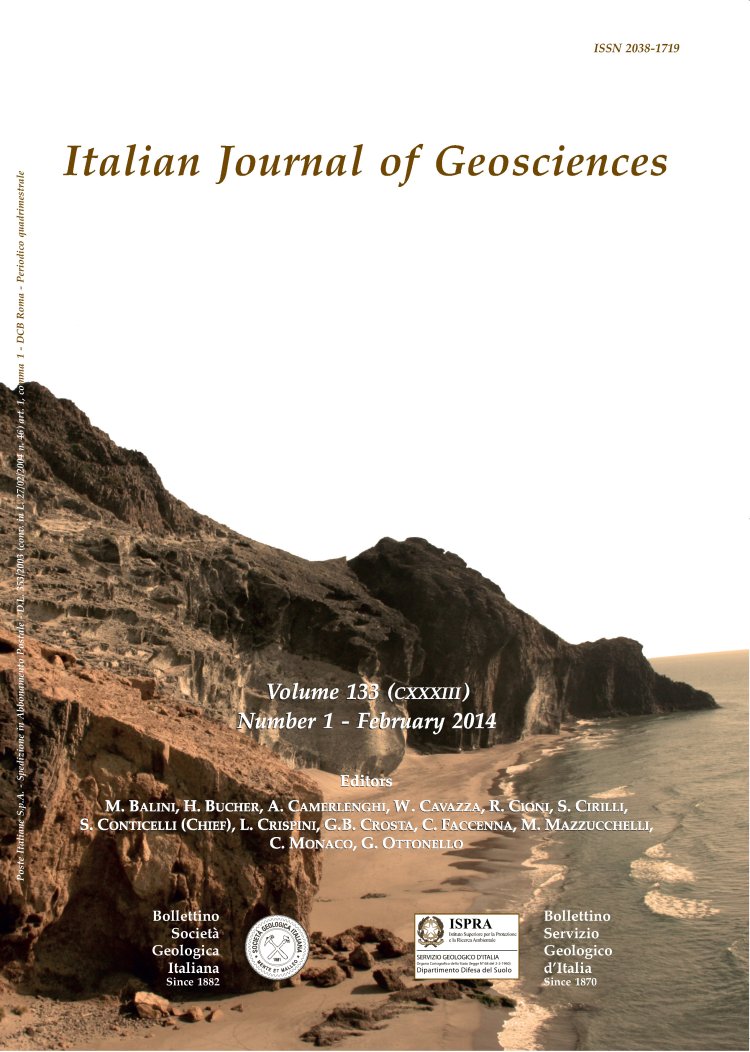
Chemical and minero-petrographic features of Plio-Pleistocene fine-grained sediments in Calabria, southern Italy
Francesco Perri(*), Luigi Borrelli(**), Giovanni Gullà(**) & Salvatore Critelli(*)
(*) Università della Calabria, Dipartimento di Biologia, Ecologia e Scienze della Terra - 87036 Arcavacata di Rende (CS), Italy. Corresponding author: Francesco Perri, e-mail: francesco.perri@unical.it
(**) CNR-IRPI_Sede di Cosenza, Via Cavour, 4/6 - 87030 Rende (CS), Italy.
Volume: 133 (2014) f.1
Pages: 101-115
Abstract
The composition of Plio-Pleistocene fine-grained sediments from different areas of Calabria (southern Italy), have been studied to unravel the interplay of provenance. The use of multivariate statistical methods (e.g., PCA) based on biplot, allows for the discrimination of different groups of sediments. The general chemical composition of the fine-grained samples reflects the mineralogical variation observed in the sediments, which are composed of phyllosilicates, quartz, calcite, dolomite and feldspars. The I-S mixed layers, 10 Å-minerals (illite and micas) are the most abundant phyllosilicates, chlorite and kaolinite are present in variable amounts, and smectite and chlorite/smectite mixed layers are presents in trace amounts. These chemical and mineralogical variations are also confirmed by SEM analysis, which also demonstrates that phyllosilicates are characterized by open and folded structures with generation of neoformed clay minerals. Provenance proxies and element ratios testify greater input of felsic source rocks, with lack of a marked mafic-ultramafic detritus input for all studied sediments, and the minero-petrographical features of the studied fine-grained sediments. These chemical and mineralogical variations are also confirmed by SEM analysis showing abundant phyllosilicate minerals for Groups 1 (Crotone Basin) and 2 (Crati Graben) and high content of quartz and feldspars grains for Group 4 (Catanzaro Graben) samples, probably due to abundant siliciclastic input coming from plutonic-metamorphic source and associated Mesozoic to Miocene sedimentary sources (Sila and Serre Massifs), and abundant calcium-carbonate phases mainly related to the presence of planktonic calcareous microfossils (Globigerina and coccoliths) for Groups 3 (southern Ionian coast) and 5 (southern Tyrrhenian coast).
Furthermore, paleogeographic reconstructions characterized by re-establishment of open-marine conditions in the Mediterranean following the Messinian salinity crisis at the beginning of the Pliocene, play an important role. A progressive increase in the connectivity of Mediterranean sub-basins with the Atlantic (e.g., subbasins at the south of the Catanzaro Strait, characterized by normal water supply) and Paratethys (e.g., sub-basins at the north of the Catanzaro Strait, characterized by freshwater supply) can be envisaged during the Neogene period; this paleogeographic reconstruction may also explain the different composition among the studied samples.
Keywords
Get Full Text